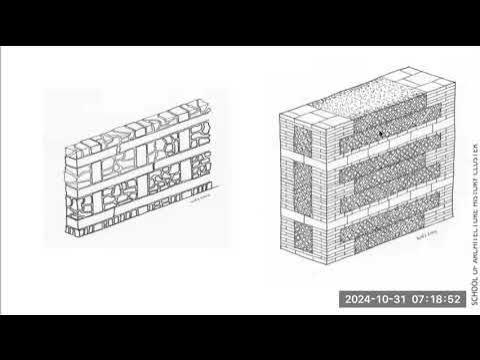✅✅✅¿Cómo eran las ciudades romanas?✅✅✅
Summary
TLDRThe video explores the evolution of Roman cities, beginning with the mythical foundation of Rome along the Tiber River. It highlights Rome's strategic growth, influenced by trade and cultural exchanges, particularly with the Greeks. The discussion includes urban planning, architectural innovations, such as temples and theaters, and the social aspects of Roman life, including public baths and housing. It contrasts the lavish villas of the wealthy with the cramped apartments of the poor, reflecting the challenges of urban living. Overall, the video provides an engaging overview of the grandeur and complexity of Roman urban life.
Takeaways
- 🏛️ Rome was mythically founded as a small village by the Tiber River, but archaeological evidence suggests earlier habitation.
- 🚢 The strategic location of Rome allowed it to become a trade hub, particularly benefiting from salt extraction.
- 🌍 The influence of Greek culture shaped Roman urban planning, leading to the adoption of an orthogonal layout in new cities.
- 📍 Key urban features included the forum at the city center, the Via Cardo, and the Via Decumanus, which structured city life.
- 🏺 Roman temples were adapted from Greek designs, featuring front columns and a raised podium.
- 🎭 The Colosseum is an iconic example of Roman amphitheatres, designed for large-scale public entertainment.
- 🛁 Public baths, or thermae, featured advanced heating systems and served as social gathering places.
- 🚰 Aqueducts were crucial for supplying water, showcasing Roman engineering ingenuity in maintaining a steady flow.
- 🏠 Housing in Rome varied significantly; wealthy citizens had spacious homes, while the poor lived in crowded, multi-story buildings.
- 🔥 Overcrowding in cities like Rome led to frequent fires, prompting regulations on construction to improve safety.
Q & A
What mythological event marks the founding of Rome?
-According to mythology, Rome was founded as a small village on the banks of the Tiber River.
What strategic advantages did Rome's location provide?
-Rome's location on the Tiber River allowed for trade with other regions and access to essential resources like salt, facilitating its growth.
How did Roman urban planning reflect Greek influence?
-Romans adopted a grid layout for their cities, inspired by Greek urban planning, which included main streets and organized public spaces like forums.
What was the significance of the forum in Roman cities?
-The forum served as the center of social, political, and economic life, housing important buildings and acting as a gathering place for citizens.
In what ways did Roman temples differ from Greek temples?
-While Roman temples were inspired by Greek designs, they featured fewer columns and were often built on a podium, adapting the classical style to Roman preferences.
What role did the amphitheater play in Roman society?
-Amphitheaters, like the Colosseum, were venues for public spectacles, including gladiatorial games, which were a key aspect of Roman entertainment and culture.
How did the Roman baths reflect societal values?
-Public baths were important social centers, showcasing advanced engineering for heating and providing a communal space for relaxation and hygiene.
What engineering feat was essential for supplying water to Roman cities?
-Aqueducts were crucial for transporting water from distant sources into cities, demonstrating Roman engineering expertise.
How did housing vary in Roman cities?
-Housing ranged from luxurious villas for the wealthy to cramped apartments for the poor, reflecting the vast economic disparities within Roman society.
What challenges did urban life in Rome face?
-Rome dealt with traffic congestion, overcrowding, and frequent fires, prompting emperors to implement regulations to manage these urban issues.
Outlines

This section is available to paid users only. Please upgrade to access this part.
Upgrade NowMindmap

This section is available to paid users only. Please upgrade to access this part.
Upgrade NowKeywords

This section is available to paid users only. Please upgrade to access this part.
Upgrade NowHighlights

This section is available to paid users only. Please upgrade to access this part.
Upgrade NowTranscripts

This section is available to paid users only. Please upgrade to access this part.
Upgrade NowBrowse More Related Video

Ancient Rome for Kids | Learn all about the History of the Roman Empire for Kids

Virtual Rome: What Did Ancient Rome Look Like?

Origine di Roma ed età monarchica

Romulus and Remus - The Story of the Founding of Rome - Roman Mythology - See u In History

ROMAN ETRUSCAN 2024

A história da fundação de Roma | Nerdologia
5.0 / 5 (0 votes)